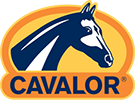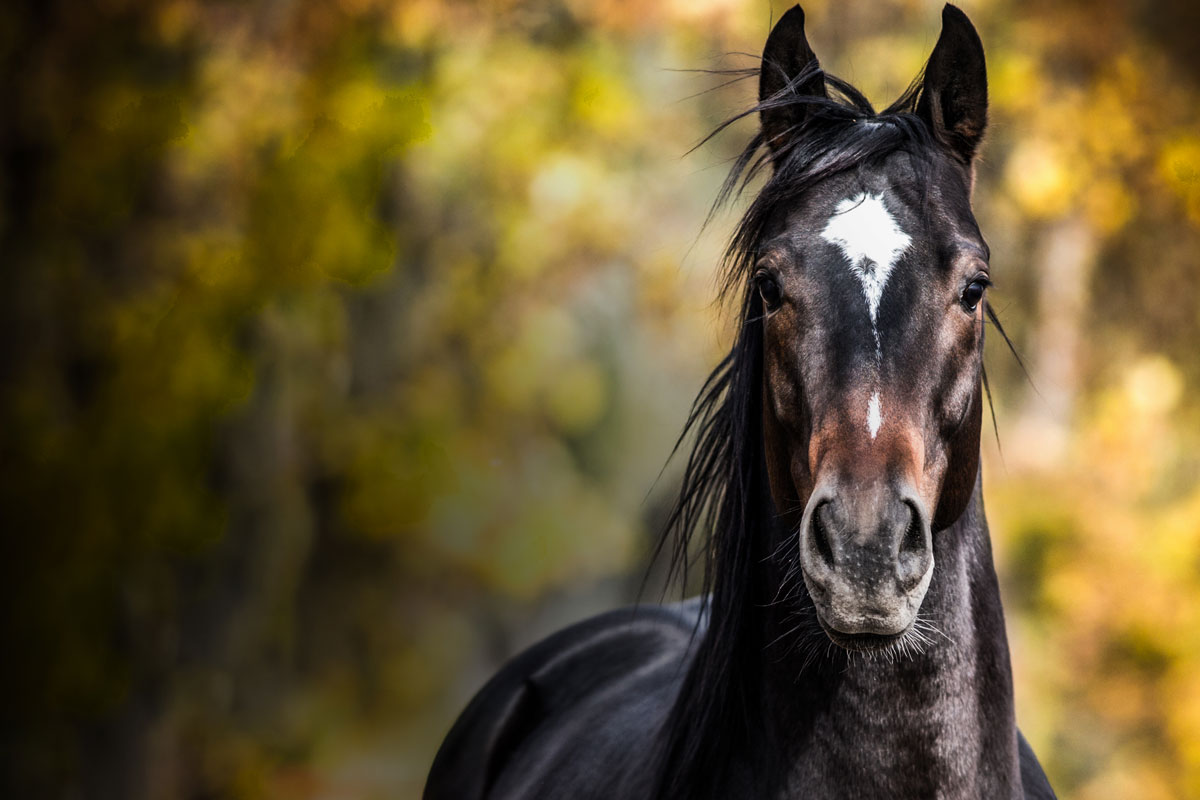It’s important for horses and ponies to have a healthy weight. A horse with a healthy weight delivers better performance, has more energy and has less risk of developing laminitis or insulin resistance. But what is a healthy weight for your horse? And what should you do if your horse is overweight or underweight?
Just like humans, not all horses have the same needs. One horse may need lots of food to stay in shape, whilst another will get fat without eating excessively. The secret is to provide just enough energy as is being expended. Just like humans, horses need adequate exercise. Physical activity is necessary for good blood circulation, well-developed muscles, mental health, and, yes, to maintain a healthy weight.
Just like humans, horses need adequate exercise
Keeping energy in balance
Food supplies the body with energy. It stimulates digestion and the horse’s body converts nutrients into energy. As long as the energy intake stays on par with the energy requirement, the horse will stay the same weight. This is called energy balance. Nevertheless, your horse may be taking in more energy than it burns off. Excess energy is stored in the body as fat. The reverse works in the same way. If the energy requirement is greater than energy intake, the horse’s body will begin to dip into its stored reserves.
How much should my horse weigh?
What’s your horse’s weight? Hardly anyone can give a precise answer to this question. You can calculate your horse’s weight without the use of a scale – get a long measuring tape and follow the steps given here. Knowing your horse’s weight is not just practical for configuring its feed ration, it’s also important for determining proper medication dosages.
1. Measure the circumference.
Place the measuring tape around the horse’s ribcage. The tape should lie just behind the withers and behind the forelegs. Record the measure that you get when the horse exhales.
2. Measure your horse’s length.
Before you measure, make sure that your horse is standing straight and looking forwards. Measure your horse’s body length from the point of the shoulder to the point of the buttocks.
3. Calculate using this form
Once you know your horse’s body length and circumference, you can calculate its weight using the following formula: circumference in cm x circumference in cm x length in cm. 11,877 = your horse’s weight in kilogrammes. Caution: this formula is not intended for calculating the weight of small ponies.
TIP: You can also enter the circumference and length of your horse in MyCavalor. The weight will then be calculated for you automatically.
Is my horse too fat, too thin, or just right?
You can now determine your horse’s approximate weight from the calculations. Whilst this is valuable information, it’s not enough to determine whether your horse’s weight is healthy, as the neck and hindquarters have not been included. Your horse is at a healthy weight if:
- The body is uniformly fit with no protruding bones or pads of fat on the neck or hindquarters.
- The crest of the neck is supple and not rigid.
- There is a smooth progression from neck to shoulder.
- You can feel – but not see – the ribs.
- Hard loins are muscular. If they feel soft or can be pushed in, what you are feeling is fat deposits.
- The back is slightly inclined and not too round or roofy.
Your horse’s physical condition is the most important clue to whether you are feeding your horse just enough, too much, or too little. One practical method for determining physical condition is Body Condition Scoring (BCS). Body Condition Scoring gives you an impression of the layer of fat beneath the skin and also tells you something about muscle tone. The horse is judged on 6 different points on the basis of seeing and feeling. The amount of stored fat is examined at 6 places on the horse’s body: 1 is the minimum and 10 the maximum.
The difference between fat and muscle tissue is easy to feel: fat tissue is soft whilst muscle tissue is hard and firm. You are assessing the amount of fat. A score of 5 is ideal; a score of 1 means the horse is extremely thin, a score of 9 means it is extremely obese.
BCS assessments every 6 weeks will allow you to adjust the feed ration or exercise in time to avoid significant changes (the horse getting too thin or too fat).
Risks for obese horses
It’s generally more common for a horse to be overweight than underweight. This is mostly because the horse takes in too many nutrients (energy) in relation to the work asked of it.
Did you know that many horses need no additional energy beyond their roughage for the normal amount of exercise that they get? If your aim is achieving good athletic performance from your horse, you may need to supplement its feed with concentrates. And concentrates are an essential part of a high-performance sport horse’s diet. Studies have shown that we too often overfeed our horses, leading to their obesity. Studies carried out in the United States have found that 32% of horses were overweight and 19% were obese. The percentage of horses in the United Kingdom that are overweight or obese is quite high as well, with 45% suffering from one of these two conditions.
Overweight horses at a higher health risk and are more prone to:
- Insulin resistance (IR)
- Laminitis
- Reduced performance from increased strain on the heart and lungs
- Reduced fertility
- Joint, tendon, and ligament problems
- Chronic inflammations
- Hyperlipidemia (fat in the blood)
Moving towards a healthy weight
Is your horse overweight? If so, then it’s important to get it slimmed down – responsibly. For you, it’s important to know that there are two factors for successful weight loss
- Reduced energy intake
2. An appropriate exercise programme
It surely won’t surprise you to learn that the best results are achieved with a combination of the two.
If you want your horse to lose weight, you must make sure that it takes in at least 20%-30% less energy than it needs. This will force its body to draw on fat reserves for the energy needed to maintain bodily functions and performance. More physical activity is essential, as it helps to burn fat. However, your horse should not lose too much weight too quickly, as this can lead to health problems as well. A responsible weight loss plan is one that brings steady weight loss over time.
RESPONSIBLE WEIGHT LOSS: RECOMMENDATION FROM OUR FEED EXPERTS:
If you want your horse to lose weight, then you’ll also want to ensure that it’s getting enough energy and retaining muscle mass. That’s why you shouldn’t make sudden, drastic reductions to your horse’s feed, because then muscle will be lost along with fat. It’s important that carbohydrate (energy) intake be reduced whilst maintaining the quantity of proteins, minerals and vitamins.
An ideal mixture for helping your horse slim down responsibly is Cavalor Silhouette. It covers a horse’s requirements for all essential nutrients such as proteins, vitamins, and minerals. It contains little starch (6%) and sugar (5%), and your horse gets its energy from fibre. Moreover, it contains easily digestible proteins with a composition of amino acids that is quite similar to that found in equine muscle. This prevents loss of muscle mass during weight loss.
We also recommend that you control your horse’s feed intake to the greatest extent possible, including a nutrient analysis of your horse’s roughage as well as limited turnout or turnout with a feed muzzle.
Do you need assistance in creating the right weight loss feed plan for your horse? At MyCavalor.com you can create a feed ration calculation online based on the breed and weight of your horse. Would you rather ask us directly? No problem, you can! Send an email to info@cavalor.com or call our Consumer Line at + 32 9 220 25 25


